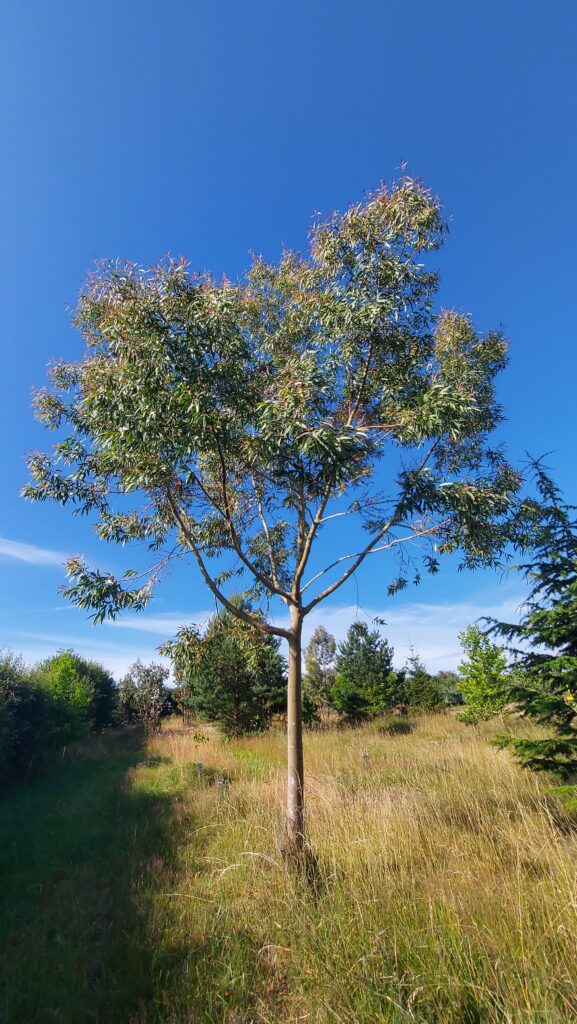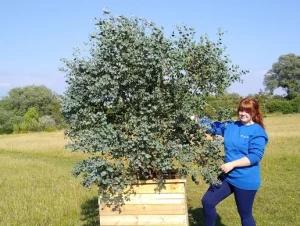
When choosing your species, it is important to consider the mature height, deciding at the outset whether you will prune to control growth (a bit like choosing to prune an apple tree to keep it smaller), to coppice or pollard as a management system or to grow as a hedge or screen with annual trimming.
We often get asked why Eucalyptus grow so fast – Eucalyptus are perfectly adapted to compete and survive in their natural environment of Australia, New Zealand and Tasmania. They have evolved to germinate quickly under the right conditions and then to grow into a tree as rapidly as possible before Koala, Kangaroos and insects nibble them to death. In their natural habitat, Eucalyptus are plagued by leaf and bud munching bugs and fungi which continually check and reduce their growth. Grasses and other vegetation increase the competition for food, water and light and poor, infertile stony soils make for generally hostile growing conditions. As a species, they are genetically geared towards a ‘quick getaway’, to put as much distance between them and the local competition as possible.
When grown in cultivation in Britain, Eucalyptus do not experience the same challenges as the Australian bush (just a whole set of new ones!). Generally, garden soils are richer and more fertile. There is less competition from other vegetation, pests or diseases and attacks from itinerant Koalas are virtually non existent.
Free from indigenous nibbling pests and fungi, Eucalyptus in this country will grow much faster than your average garden tree. Despite the windy, cooler climate and erratic weather, you can expect the larger species to achieve 2-3 metres of new growth each year, provided your new tree is vigorous, not root-bound and planted in a relatively sheltered location. There are a few notable species that will not achieve this rapid growth rate:
E. vernicosa is very small and slow growing.
The Snow gum family (E. pauciflora and its subspecies) initially grow quite slowly in their first few years, whilst establishing a root system; growing much faster in year three and beyond.
There is an interesting correlation between rate of growth of a Eucalyptus species and its potential mature height. We have experienced this in the nursery. Trees that grow rapidly tend to grow into tall trees and correspondingly, slower growing species tend to produce smaller trees.
It cannot be expected for a Eucalyptus to rocket up to around 16 feet over a period of 3-4 years and then stop growing: it doesn’t work like that with Eucalypts, any more than it does for Leyland Cypress, Thuja or Sycamore trees.
